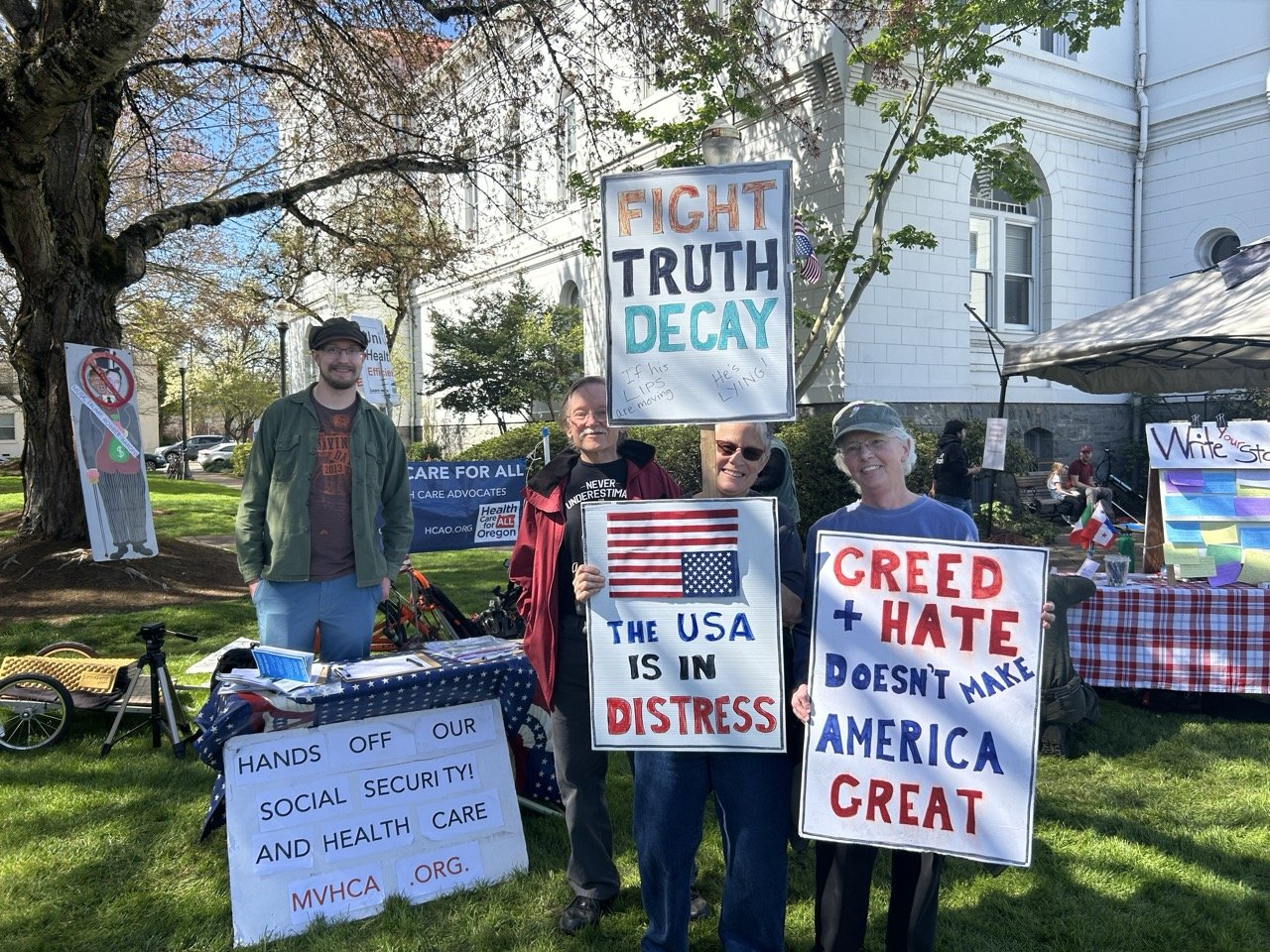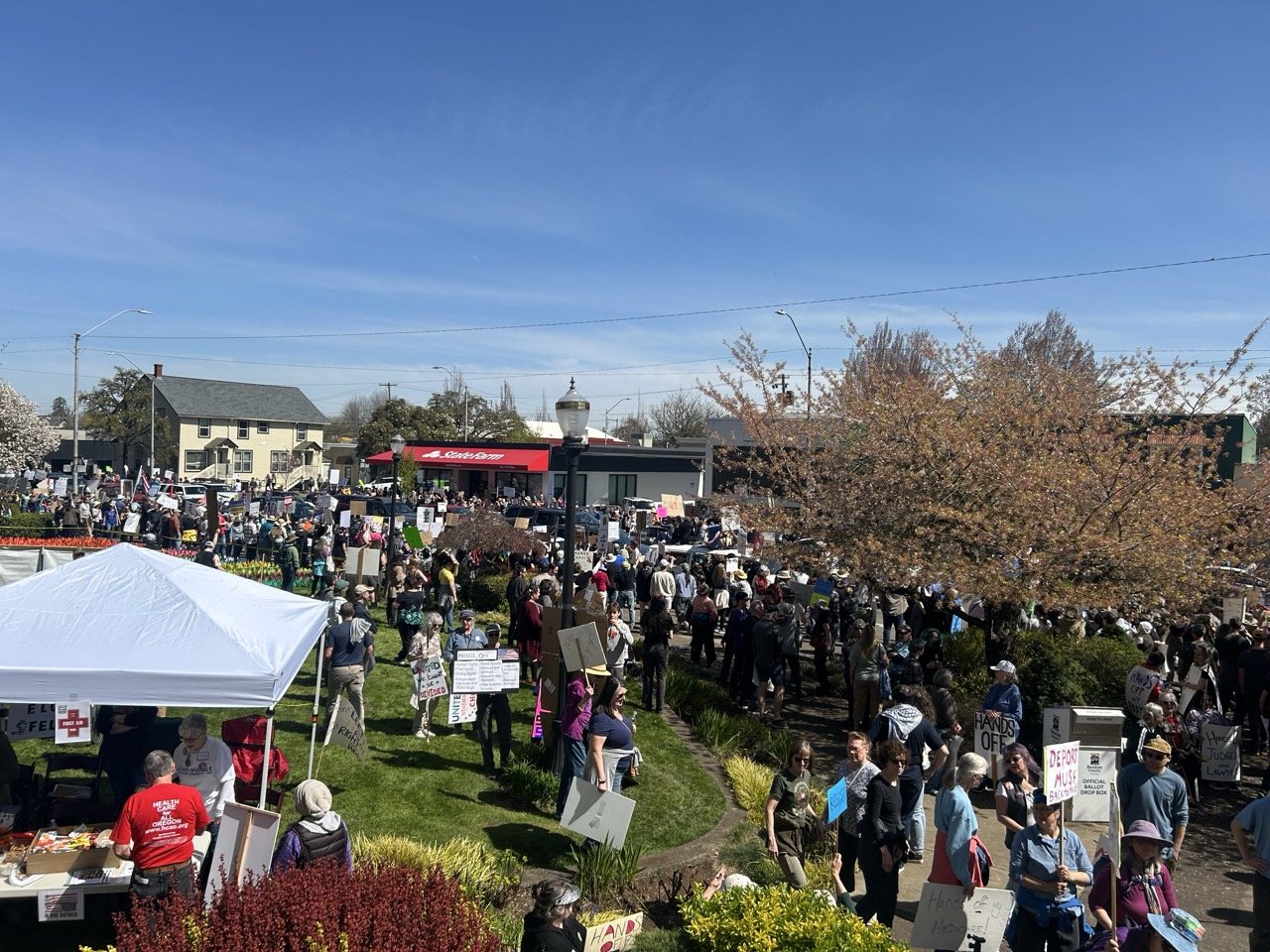Medicaid Update - 100 Days Into Trump’s Second Term
In February, we wrote about the Trump administration’s potential changes to Medicaid and who relies on its services. We focused on potential shifts in policy, budget cuts, and efforts to deregulate (check out the post HERE).
The past 100 days have revealed the importance Americans place on Medicaid and other government funded social services, as threats from the Trump administration and Elon Musk’s DOGE have resulted in nation-wide protests.
On April 5th, Corvallis held one of the largest protests in the city’s history. Thousands of people gathered at the Benton County Courthouse to rally against the administration’s careless cuts to government spending and support the hundreds of similar protests across the nation. In the following post we will discuss specific actions taken to cut Medicaid by federal and state lawmakers and what that means for the people who rely on its benefits.




Mid-Valley Health Care Advocates at the April 5th rally in Corvallis, Oregon.
Shrinking the Medicaid Federal Budget
The Trump administration recently decided to eliminate a crucial Medicaid financing mechanism that has long supported state-level health initiatives addressing social determinants of health. This policy shift, announced by the Centers for Medicare and Medicaid Services (CMS), discontinues federal matching funds for designated state health programs, including services like high-speed internet for rural health providers, student loan repayments for healthcare workers, and in-home support services for vulnerable populations (1).
While the administration claims this move aims to curb Medicaid spending without cutting benefits, in reality it undermines states' ability to fund programs that extend care beyond traditional clinical settings. These initiatives have been instrumental in improving access to healthcare in underserved communities, particularly in states like Arizona, California, Hawaii, Massachusetts, New York, North Carolina, Washington, and Oregon (1).
This policy reversal threatens the progress made in addressing health disparities and places additional financial strain on states already grappling with budget constraints. As discussed in the January 6th blog post, two-thirds of Americans have a connection to Medicaid (2). The administration’s decision jeopardizes the government’s ability to ensure Medicaid will continue to serve as a safety net for all Americans.
State Work Requirements
The resurgence of Medicaid work requirements in several states poses a challenge for low-income adults, particularly those with chronic health conditions. As highlighted by NPR, individuals like Summer Neal, who suffers from lupus, face the risk of losing essential healthcare coverage due to administrative errors or the inability to meet work requirements (3). Such policies not only jeopardize access to necessary medications but also place undue financial strain on vulnerable populations.
While proponents argue work requirements encourage self-sufficiency, they often fail to consider the complexities of health and employment (2). Over 90% of Medicaid recipients are already employed, studying, or caregiving (2). It has also been shown that work requirements do not encourage more people to seek employment. For many people on Medicaid who do not work, their circumstance is tied to a health condition, not a personal choice. Implementing work requirements can worsen underlying health challenges and can lead to unintended consequences, including increased healthcare costs and reduced access to necessary services for the people who need it most.
Intergenerational Consequences
When we talk about Medicaid, we’re talking about the foundation of care for millions of older adults. As Howard Gleckman explains, Medicaid isn’t just a healthcare program — it’s the main way seniors access nursing homes and critical in-home support services (4). For many families, these services are not luxuries; they are lifelines. Nursing homes provide skilled, round-the-clock care for those who can no longer live safely on their own, while in-home support allows others to stay in familiar surroundings, maintaining dignity and independence as they age. Without Medicaid’s support, both options would be financially out of reach for countless Americans.
The ripple effects of Medicaid cuts extend far beyond older adults; they will profoundly impact entire families and future generations. For adult children caring for aging parents, the loss of Medicaid funding for nursing homes and in-home support would create an immense financial burden. Many will be forced to make impossible choices between caring for their loved ones and maintaining their own financial stability. The strain placed on caregivers, often women, can lead to increased stress, lost wages, and diminished quality of life. By undermining Medicaid, we risk destabilizing the caregiving systems that hold families together, forcing future generations to bear the emotional and financial weight of an underfunded, overburdened system.